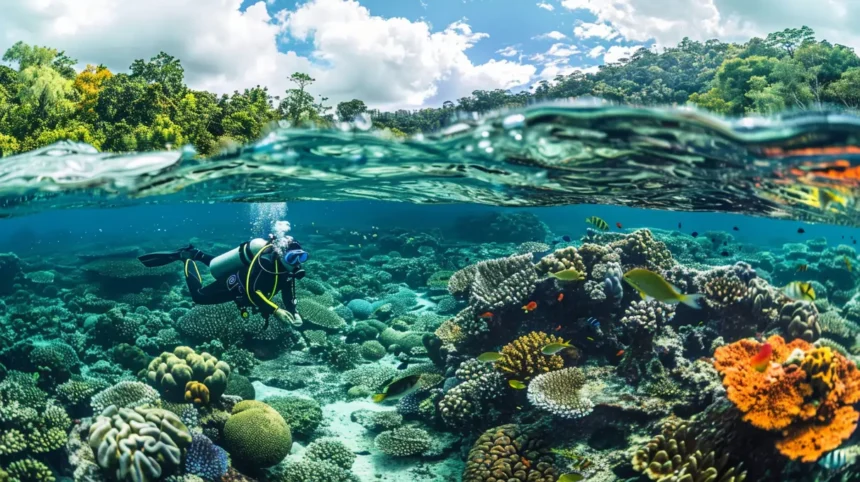⫸ Introduction
The Great Barrier Reef, a breathtaking underwater metropolis teeming with life, stretches over 2,300 kilometers (1,400 miles) along the northeastern coast of Australia. It is the world’s largest coral reef system and a UNESCO World Heritage Site, visible even from space. But why is the Great Barrier Reef important on a global scale? Beyond its awe-inspiring beauty, this natural wonder plays a critical role in the health of our planet and the well-being of countless species, including our own.
Brief Overview of the Great Barrier Reef
The Great Barrier Reef comprises over 2,900 individual reefs and 900 islands, forming a complex and interconnected ecosystem. This intricate network of coral reefs, seagrass beds, and mangroves provides a habitat for an astonishing diversity of marine life, including thousands of species of fish, mollusks, turtles, sharks, and rays.
This article will delve deeper into why the Great Barrier Reef is important, exploring its ecological, economic, and cultural significance. We will examine the threats facing this fragile ecosystem, the ongoing conservation efforts to protect it, and the steps we can all take to ensure its survival for future generations.
⫸ Formation of the Great Barrier Reef
The Great Barrier Reef, a masterpiece of nature spanning over 2,300 kilometers, didn’t appear overnight. It results from millions of years of gradual evolution, shaped by the coral polyps and their environment. Its formation is a tale etched in eons of geological history, revealing why the Great Barrier Reef is important on a scale far beyond its sheer beauty.
How is the Reef Formed?
The Great Barrier Reef’s journey began over 20 million years ago. As the Australian continent drifted northward, conditions became favorable for coral growth. Tiny marine invertebrates called coral polyps, relatives of jellyfish and anemones, started colonizing the shallow, sunlit waters off the coast. These minuscule creatures, related to jellyfish and anemones, extract calcium carbonate from seawater to construct their hard exoskeletons. Over countless generations, their skeletons accumulated, forming the base of the world’s largest coral reef system.
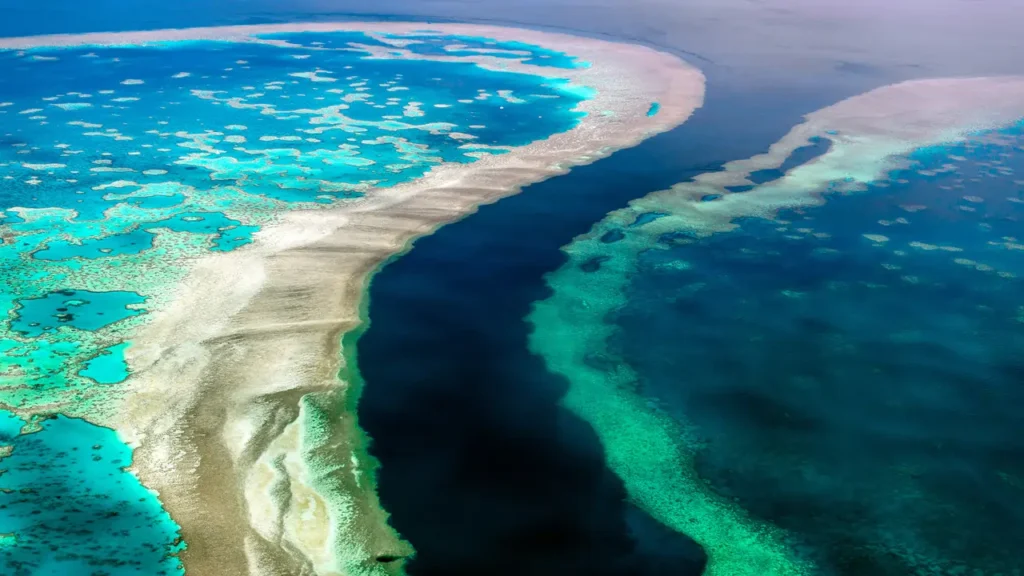
Over time, countless generations of polyps built upon the foundations of their ancestors, creating a vast underwater network of coral structures. These structures are aesthetically pleasing and provide critical habitat for diverse marine life, making the Great Barrier Reef important for biodiversity.
Ancient Coral Foundations: The Geological Timeline
The Great Barrier Reef’s geological history is marked by periods of growth and decline, influenced by fluctuating sea levels and environmental changes. During the last ice age, when sea levels were lower, the reef’s foundations were laid on exposed limestone platforms. As the ice melted and sea levels rose, the reef expanded, reaching its current size around 8,000 years ago.
Understanding this geological timeline is crucial for comprehending the reef’s vulnerability to modern threats like climate change and rising sea temperatures. The reef’s past resilience gives us hope for its future, but it also highlights the urgency of conservation efforts to protect this invaluable ecosystem.
Types of Coral and Reef Structures Within the GBR
The Great Barrier Reef isn’t a uniform structure; it’s a mosaic of diverse reef types and coral species. The reef’s outer edge features barrier reefs, robust formations that act as a buffer against powerful ocean waves. Closer to shore, fringing reefs line the coast, while platform reefs, isolated patches of coral and coral cays, dot the shallow waters.
Over 600 hard and soft coral types thrive within these reefs, creating a vibrant underwater landscape crucial to the reef’s biodiversity and significance in the global ecosystem. It also explains why the Great Barrier Reef is important as a haven for marine life.
⫸ Why is the Great Barrier Reef Important?
Why is the Great Barrier Reef important? The answer lies in its multifaceted value.
- Biodiversity Hotspot: The reef is home to an estimated 10% of the world’s fish species, making it a crucial reservoir of marine biodiversity.
- Economic Engine: Tourism and fishing industries associated with the Great Barrier Reef generate billions of dollars annually, supporting livelihoods for local communities.
- Coastal Protection: The reef acts as a natural barrier, protecting shorelines from erosion caused by waves and storms.
- Scientific Research: The reef is a living laboratory for scientists studying climate change, marine biology, and other vital fields.
- Cultural Heritage: The Great Barrier Reef holds deep cultural and spiritual significance for Indigenous Australians.
The Great Barrier Reef isn’t just an ecological treasure; it’s an economic powerhouse. It generates billions of dollars in tourism revenue annually, providing livelihoods for thousands of people. It’s also a source of food and medicine, and its intricate coral structures act as a natural barrier, protecting coastlines from erosion.
Why the Great Barrier Reef is a Global Treasure
The Great Barrier Reef is not merely an Australian asset but a global treasure. Its importance extends far beyond Australia’s borders, influencing ocean currents, weather patterns, and the livelihoods of millions worldwide. Why is the Great Barrier Reef important? Because its decline would be a loss felt worldwide.
Biodiversity and Marine Life: A Hotspot of Life
The Great Barrier Reef is synonymous with biodiversity. It’s a nursery for marine species, a feeding ground for migratory animals, and a complex ecosystem that contributes to the health of our oceans. It supports over 600 hard and soft coral types, 1,625 species of fish, 133 varieties of sharks and rays, 4,000 types of mollusks, hundreds of coral species, and countless other organisms. It’s a place for endangered species like sea turtles, dugongs, and giant clams.
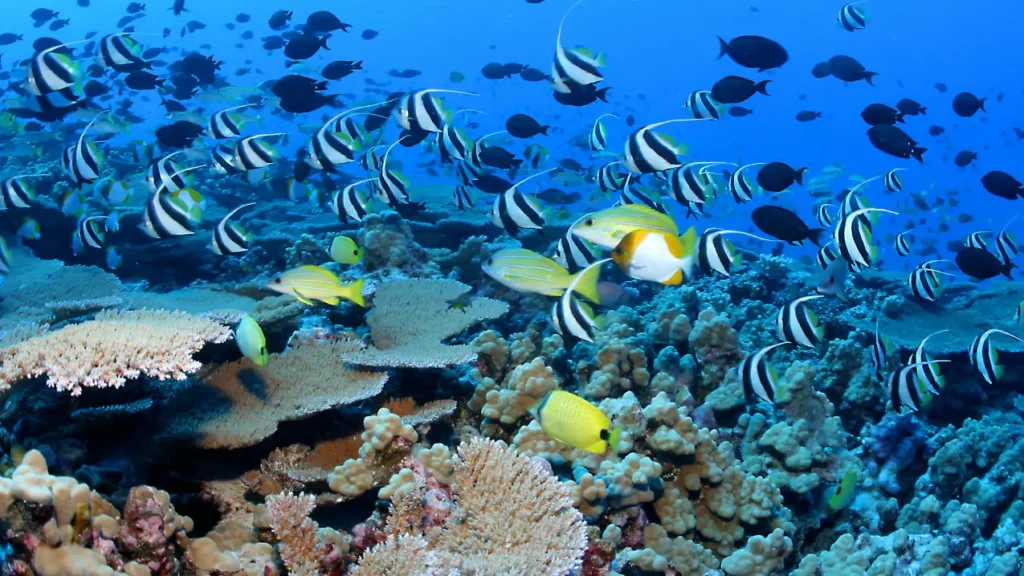
● A vibrant underwater world: The reef’s diverse inhabitants
The Great Barrier Reef houses thousands of marine creatures, from the iconic clownfish to the majestic manta ray. Each species plays a unique role in maintaining the reef’s delicate balance. The reef’s biodiversity is not just a spectacle to behold; it’s a crucial indicator of ocean health. Changes in the reef’s composition can signal broader environmental shifts, making it a barometer for climate change and pollution.
● Symbiotic relationships: Coral and its essential partners
At the heart of the Great Barrier Reef’s ecosystem is coral, the tiny animal that builds the reef’s vast structure. Coral has a symbiotic relationship with microscopic algae called zooxanthellae, which live within its tissues. These algae provide coral with food and color, while the coral offers protection and nutrients. This partnership is essential for the reef’s survival and growth, making it a model of ecological interdependence. However, threats like coral bleaching disrupt this delicate balance, highlighting why the Great Barrier Reef is important to safeguard.
● Threatened species: Conservation challenges and successes
While the Great Barrier Reef is a natural marvel, it faces significant threats. Climate change, pollution, overfishing, and coastal development have affected its health. Many species that call the reef home are now endangered, including iconic animals like sea turtles and dugongs. Conservation efforts are underway to protect the reef and its inhabitants, but the challenges are immense. The fate of the Great Barrier Reef is a global concern, as its decline would have far-reaching consequences for marine life, climate, and the livelihoods of millions. Understanding why the Great Barrier Reef is important is the first step towards protecting it.
⫸ Threats to the Great Barrier Reef: A Delicate Balance in Peril
The Great Barrier Reef, a breathtaking underwater paradise and a UNESCO World Heritage Site, faces many threats that jeopardize its very existence. Understanding these threats is crucial to comprehending why the Great Barrier Reef is important for Australia and the health of our planet’s oceans.
Climate Change: The Silent Killer
Climate change poses the greatest and far-reaching threat to the Great Barrier Reef. Rising sea temperatures trigger devastating coral bleaching events, where corals expel the symbiotic algae that give them their vibrant colors and nutrients. This leaves the corals vulnerable to disease and starvation. Additionally, increased carbon dioxide absorption by the ocean leads to ocean acidification, which hampers the corals’ ability to build their calcium carbonate skeletons. These climate-driven impacts have resulted in widespread coral loss, making it increasingly difficult for the reef to recover.
Pollution: A Toxic Tide
Pollution from land-based sources, including agricultural runoff, industrial waste, and sewage discharge, also wreaks havoc on the Great Barrier Reef. Excess nutrients fuel algal blooms, which smother corals and disrupt the delicate ecosystem balance. Plastics and other marine debris entangle marine life, causing injuries and fatalities. These pollutants harm individual organisms and compromise the reef’s health and resilience.
Crown-of-Thorns Starfish: A Natural Predator’s Outburst
The crown-of-thorns starfish, a native species to the Great Barrier Reef, has experienced population explosions due to nutrient runoff and the removal of their natural predators. These starfish are voracious coral predators, leaving behind white skeletal remains after feeding. While they play a natural role in the ecosystem, their outbreaks have exacerbated coral loss and hampered the reef’s recovery from other stressors.
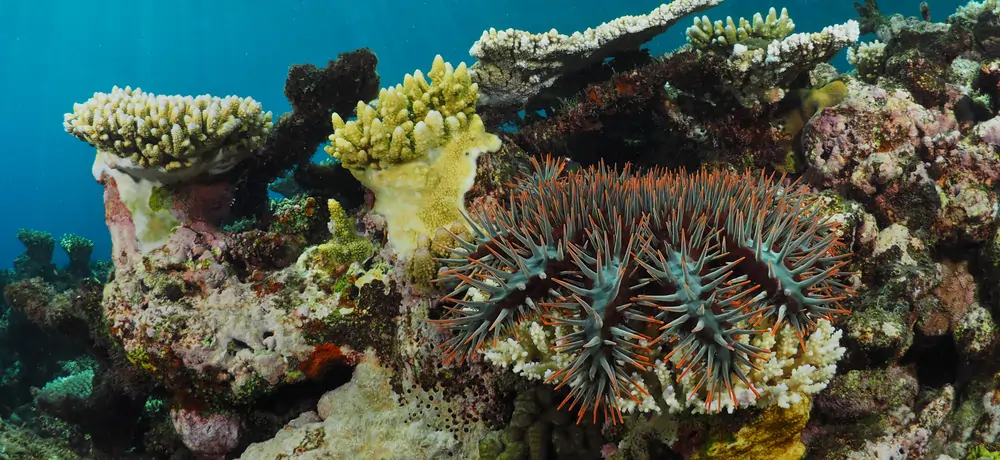
Overfishing and Habitat Destruction
Unsustainable fishing practices, including overfishing and destructive fishing methods, disrupt the reef’s delicate food web. Removing key species can trigger cascading effects throughout the ecosystem. Additionally, habitat destruction through coastal development, dredging, and anchoring damages crucial reef structures, further impacting the reef’s biodiversity and ability to withstand environmental pressures.
Understanding these threats is paramount in answering the question, “Why is the Great Barrier Reef important?” The reef’s survival is intertwined with the health of our planet’s oceans, and its decline serves as a stark warning about the consequences of human actions on the environment. Protecting this invaluable ecosystem is a matter of preserving its beauty and safeguarding its countless benefits, from supporting marine biodiversity to contributing to local economies.
⫸ Why Conservation Efforts Matter for the Great Barrier Reef
The Great Barrier Reef isn’t just a breathtaking natural wonder; it’s a complex ecosystem vital to the health of our planet. But why is it important enough to warrant extensive conservation efforts? The answer lies in its incredible biodiversity, economic value, and crucial role in climate regulation. Climate change, pollution, and other human-induced stressors threaten the reef’s delicate balance, making safeguarding it a global imperative.
The Great Barrier Reef Marine Park: A Protected Haven
Established in 1975, the Great Barrier Reef Marine Park is the largest marine park in the world, covering a staggering 344,400 square kilometers. It is a defense against overfishing, destructive fishing practices, and coastal development. Within the park, various zones dictate permissible activities, balancing protection and sustainable use.

Research and Monitoring: Unveiling the Reef’s Secrets
Understanding the intricate workings of the Great Barrier Reef is paramount to its conservation. Scientists and researchers employ cutting-edge technology to monitor coral health, water quality, and marine life populations. This data allows for informed decision-making, early detection of threats, and development of targeted conservation strategies.
Reducing Our Carbon Footprint: A Global Responsibility
Climate change is the most significant threat to the Great Barrier Reef, and that’s why it’s so important to protect it. Rising sea temperatures lead to coral bleaching, a devastating phenomenon in which corals expel their symbiotic algae, turning white and vulnerable. By reducing our carbon footprint through sustainable practices, we can mitigate the impacts of climate change and give the reef a fighting chance.
Citizen Science and Tourism: Empowering Guardians of the Reef
Conservation efforts extend beyond scientists and policymakers. Citizen scientists and responsible tourism are pivotal in protecting the Great Barrier Reef. Through programs like the Eye on the Reef app, visitors can report sightings of marine life and environmental concerns, contributing to ongoing research. Additionally, sustainable tourism practices educate visitors about the reef’s importance and encourage them to become stewards of its future.
The Great Barrier Reef is not just an Australian treasure; it’s a global asset. Understanding why the Great Barrier Reef is important and embracing conservation efforts can ensure that this magnificent underwater world continues to thrive for generations.
⫸ Visiting the Great Barrier Reef
Why is the Great Barrier Reef important beyond its undeniable beauty? As you plan your adventure to this natural wonder, it’s vital to understand the significance of responsible tourism and the role it plays in preserving this delicate environment. By making informed choices and adopting sustainable practices, you can contribute to the ongoing conservation efforts that protect the Great Barrier Reef for future generations.
Why is the Great Barrier Reef important beyond its undeniable beauty? As you plan your adventure to this natural wonder, it’s vital to understand the significance of responsible tourism and the role it plays in preserving this delicate environment. By making informed choices and adopting sustainable practices, you can contribute to the ongoing conservation efforts that protect the Great Barrier Reef for future generations.
Responsible Tourism Tips
Prioritize eco-conscious operators, minimize waste, respect marine life, and educate yourself about the reef’s fragile ecosystem. These are just a few simple steps to ensure your visit to the Great Barrier Reef is enjoyable and sustainable.
Responsible tourism is essential to the survival of the Great Barrier Reef. Here’s how to be a conscious traveler:
- Respect marine life: Don’t touch or chase animals; maintain a safe distance from coral formations.
- Reduce waste: Avoid single-use plastics and dispose of trash responsibly.
- Support local communities: Choose accommodations and tour operators that benefit the local economy.
- Snorkeling or diving carefully: Avoid touching or kicking coral.
- Wearing protective clothing: Rash guards and wetsuits help reduce sunscreen use.
- Conserving water: Showers should be short, and avoid using excess water for rinsing gear.
● Choosing Eco-Certified Operators
When selecting tour operators, look for those with eco-certification. These businesses adhere to strict environmental standards, minimizing their footprint and supporting conservation efforts. By choosing an eco-certified operator, you’re not only ensuring a high-quality experience but also contributing to the long-term health of the Great Barrier Reef.
● Reef-Safe Sunscreen and Practices
Did you know that some sunscreens contain chemicals harmful to coral? The chemicals in many sunscreens can harm coral reefs. Opt for reef-safe options that don’t contain oxybenzone and octinoxate. Remember, every little action counts when protecting this fragile environment.
Top Dive and Snorkel Sites
The Great Barrier Reef offers a wealth of underwater experiences. Whether you’re an experienced diver or a first-time snorkeler, there’s a site perfect for you. With over 2,900 individual reefs and 900 islands, the Great Barrier Reef offers endless opportunities for underwater exploration. Here are a few must-visit spots:
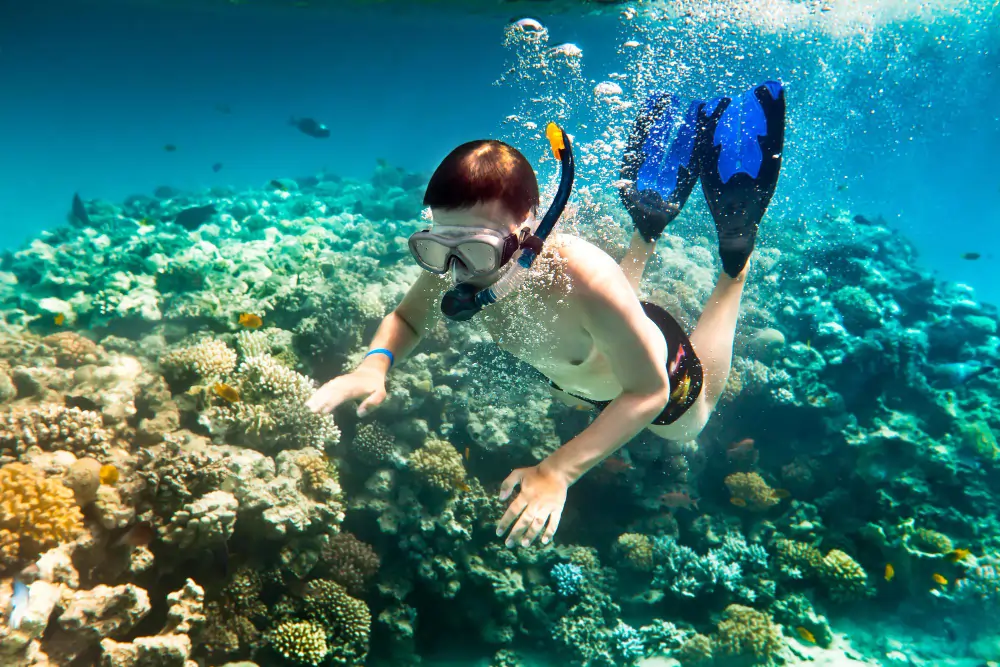
● The Outer Reef: A World of Wonder
Plunge into the depths of the outer reef to encounter vibrant coral gardens, diverse marine life, and mesmerizing underwater landscapes. It’s an unforgettable experience showcasing the immense biodiversity that makes the Great Barrier Reef so important.
● Lady Elliot Island: A House for Manta Rays
This idyllic island is known for its crystal-clear waters and abundant marine life, including graceful manta rays. Snorkeling or diving here provides a unique opportunity to witness these majestic creatures in their natural habitat.

● Heron Island: Turtles and Nesting Birds
Heron Island is a haven for both marine and terrestrial life. Here, you can snorkel alongside turtles or witness the spectacle of nesting seabirds, highlighting the interconnectedness of the reef’s ecosystem.
In conclusion, visiting the Great Barrier Reef is an opportunity to connect with nature’s wonders and understand why it is important. By following responsible tourism practices, choosing eco-certified operators, and respecting the reef’s delicate ecosystem, we can ensure this natural treasure remains vibrant and healthy for future generations.
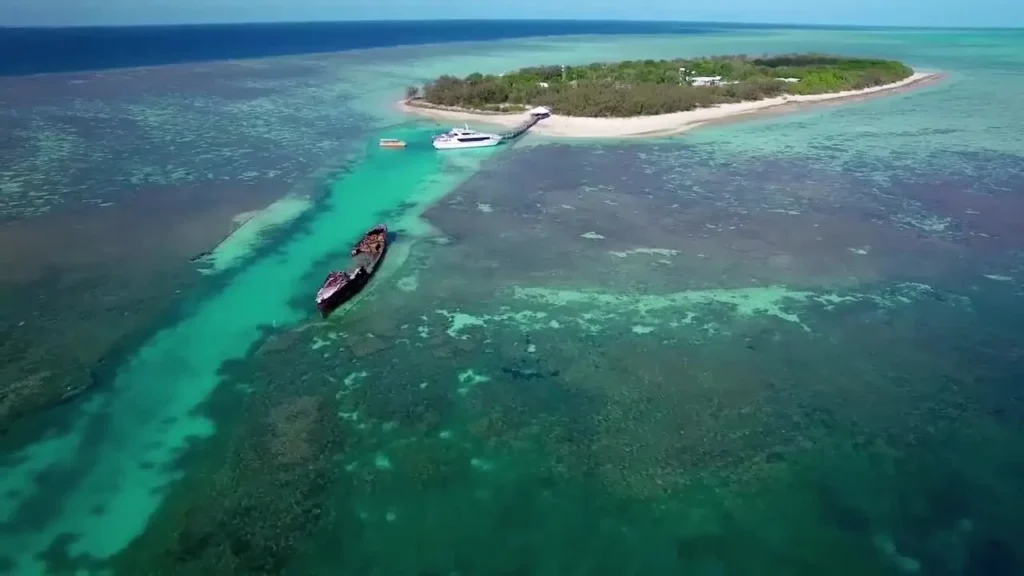
⫸ The Future of the Great Barrier Reef and Why It Matters
The Great Barrier Reef faces a precarious future, with climate change, pollution, and other threats casting a long shadow over its vibrant ecosystem. Why is the Great Barrier Reef important in the face of these challenges? Its significance extends far beyond its beauty. It is a linchpin for marine biodiversity, supporting countless species and livelihoods, and is crucial in regulating the planet’s climate.
Despite these challenges, reasons for optimism remain. Scientific research, innovative conservation strategies, and a growing awareness of the Great Barrier Reef’s importance fuel a global movement to protect this natural wonder. International cooperation, sustainable tourism practices, and a commitment to reducing carbon emissions offer hope for the reef’s survival.
⫸ Conclusion
The Great Barrier Reef is more than a breathtaking natural wonder. As this exploration has revealed, it’s a vital ecosystem supporting a quarter of the world’s marine life, bolstering economies, and offering invaluable insights into our planet’s health. However, the reef faces unprecedented threats from climate change, pollution, and other human-induced stressors. It’s clear why the Great Barrier Reef is important, and it’s equally clear that its future hangs in the balance.
The Great Barrier Reef is not just an Australian treasure; it’s a global asset that requires collective action to protect. Understanding why the Great Barrier Reef is important is the first step towards advocating its conservation. We all have a role, whether supporting sustainable tourism practices, reducing our carbon footprint, or simply spreading awareness about this extraordinary place.
We must all recognize our role in safeguarding this irreplaceable treasure. We can ensure that future generations inherit a healthy, vibrant reef by supporting conservation efforts, advocating for sustainable practices, and spreading awareness about why the Great Barrier Reef is important. The time for action is now.
Call to Action: Learn more about the Great Barrier Reef and how you can contribute to its protection. Support organizations dedicated to reef conservation and research. Share this information with others and become an advocate for this invaluable ecosystem. The Great Barrier Reef needs our help – let’s not let it down.


